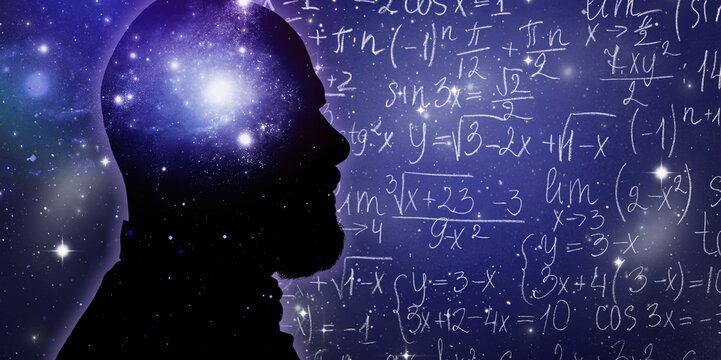Unlocking the Best of Two Worlds
Kinesiology, a holistic approach to health and wellness, is rapidly gaining recognition for its ability to address the body as an interconnected system. What sets it apart is its foundation in both Eastern philosophies and Western scientific methods. While the East has long valued the flow of energy (Chi) as a vital component of health, Western science brings a data-driven, evidence-based perspective to optimise well-being. Together, these approaches create a powerful synergy that transforms kinesiology into a comprehensive and innovative field.
By blending ancient wisdom with cutting-edge science, kinesiology offers solutions that cater to both the intuitive and the analytical mind. Whether you’re a practitioner seeking to expand your toolkit, or someone looking for a truly integrative approach to health, this interdisciplinary fusion promises remarkable benefits.
This blog will take you through the historical foundations, principles, and techniques of both approaches, unveiling how their integration enhances the practice of kinesiology. You’ll also discover real-world applications, success stories, and an outlook on the future of this dynamic field.
Introduction to Eastern Philosophies
Foundations of Eastern Thought
Eastern philosophies, such as Traditional Chinese Medicine (TCM) and Ayurveda, have always focused on balance and harmony within the body. Central to these systems is the idea of energy flow, often referred to as Chi or Prana. According to this perspective, energy circulates through pathways in the body called meridians. When this flow is disrupted, it may lead to physical discomfort, emotional distress, or even disease.
Practices like acupressure, acupuncture, and energy healing work to restore this balance, ensuring the body functions optimally. They emphasise prevention over cure, recognising that a harmonious body is a healthy one. These ancient traditions also connect the physical, emotional, and spiritual selves, creating a truly holistic approach to health.
Relevance to Modern Kinesiology
Kinesiology draws extensively from these principles. Techniques such as muscle testing are rooted in the concept of energy flow, with practitioners testing the body’s responses to identify disruptions in energy. This allows kinesiology to go beyond symptoms, addressing the root causes of imbalances.
By incorporating Eastern wisdom, kinesiology practitioners can work with the body’s natural rhythms and restore harmony, creating a foundation for long-lasting health.
Exploring Western Scientific Methods in Kinesiology
The Scientific Roots of Kinesiology
While Eastern traditions were shaped by centuries of observation and practice, Western science began to formalise kinesiology as a discipline during the 20th century. Dr. George Goodheart, a chiropractor, introduced muscle testing as a diagnostic tool in the 1960s, laying the groundwork for Applied Kinesiology. This method scientifically examines the relationship between neuromuscular function and overall health.
Western science views the human body as a complex system of interconnected networks. Techniques like muscle testing, biofeedback, and advanced imaging technologies aim to measure physiological responses, analyse patterns, and create targeted solutions for specific issues.
Advancing Kinesiology with Technology
Modern science has added precision and adaptability to kinesiology. Innovations such as wearable devices, biofeedback machines, and AI-driven diagnostic tools allow practitioners to track progress and refine strategies in real time. Western methods focus on data, making it possible to validate and fine-tune the intuitive practices derived from Eastern philosophies.
This evolving framework ensures that kinesiology remains a trusted, effective tool for improving health in the modern world.
Merging Eastern Philosophies with Western Science
Complementary Strengths
On the surface, Eastern and Western approaches may seem to operate in different worlds. Eastern methods prioritise energy flow, intuition, and harmony, while Western practices emphasise measurable data and systematic processes. However, their integration creates a complete picture of health.
For example, where Eastern techniques like acupressure focus on restoring meridian balance, Western methods use biofeedback to ensure that corrections are producing tangible results. Together, they allow for deeper insights into how the body functions and show where additional support is needed.
Innovative Practices
The blended approach is already reshaping how kinesiology is practised. For instance:
- Energy Meets Anatomy: Muscle testing evaluates energy flow while considering physical biomechanics.
- Mindfulness Meets Metrics: Mindfulness exercises, rooted in Eastern philosophies, are paired with health tracking tools to monitor stress reduction and mental clarity.
- Personalised Care: Western diagnostics help fine-tune interventions informed by Eastern traditions, creating customised solutions for each individual.
This integration bridges the gap between intuitive care and scientific validation, elevating kinesiology into an all-encompassing practice.
Real-World Applications and Benefits
Case Studies and Success Stories
The interdisciplinary nature of kinesiology has already led to extraordinary outcomes.
- From Low Energy to Vibrancy: A manager with chronic fatigue turned to kinesiology for relief. The practitioner combined meridian balancing techniques with biofeedback, identifying that stress and poor dietary habits were the culprits. After addressing dietary changes and implementing stress management strategies, the client reported increased energy and better focus.
- Faster Recovery from Injury: An athlete with persistent knee pain used a blend of acupressure, kinesiology taping, and rehabilitation exercises. By attending to both energy flow and muscle function, recovery times were shortened, and the client returned to their sport stronger than before.
Benefits for Practitioners and Clients
The integration of Eastern and Western approaches benefits everyone involved:
- For practitioners:
- A broader range of tools to address complex cases.
- Enhanced accuracy and client outcomes.
- A unique perspective that differentiates their practice.
- For clients:
- Custom-tailored solutions addressing body, mind, and energy.
- Improved health outcomes with a focus on root-cause healing.
- Proactive support for long-term balance and well-being.
The Future of Integrative Kinesiology
Evolving Practices
The future of kinesiology lies in deepening the integration of Eastern and Western methodologies. Emerging sciences, such as quantum biology and neuroplasticity, are further validating the principles of energy flow and holistic healing. These developments will likely expand the evidence-based framework for energy-focused practices, bridging the gap between tradition and modernity.
Impact on Personal and Collective Wellness
On a personal level, this fusion offers individuals greater control over their well-being, equipping them with the tools and strategies to thrive in all aspects of life. On a broader scale, it redefines health care by promoting interdisciplinary collaboration, ensuring accessibility to holistic, science-backed treatment options for all.
Reflective Summary
The marriage of Eastern philosophies and Western science in kinesiology represents the perfect harmony between tradition and innovation. By combining the wisdom of energy flow and balance with the precision of data and technology, kinesiology has become one of the most dynamic fields in holistic health.
This integrative approach not only addresses individual health issues but also opens new pathways for practitioners to expand their practice and refine their techniques. Ultimately, it offers a blueprint for a more balanced, comprehensive, and compassionate approach to health and wellness.
If you’re ready to experience this unique blend of ancient and modern strategies, consider working with practitioners who value both perspectives. Discover the power of kinesiology to bring you closer to optimal well-being—with Ease of Life Kinesiology by your side.


